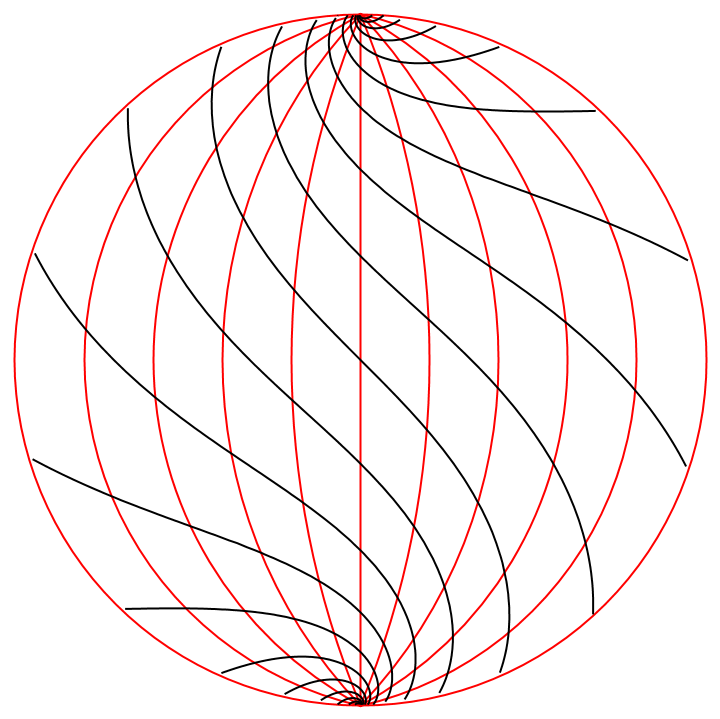|
|
Last edited by hbghlyj 2023-6-11 00:49经过$(0,\pm a)$的圆组:\begin{equation}(x-r)^2+y^2=a^2+r^2\label1\end{equation}在点$(x,y)$处的切线斜率:\begin{equation}\frac{r-x}{y}\label2\end{equation}由\eqref{1}解得\begin{equation}r=\frac{-a^2+x^2+y^2}{2 x}\label3\end{equation}曲线的切线(斜率为$y'$)旋转一个固定的角度$\tan^{-1}k$, 斜率变为$\frac{y'-k}{1+k·y'}$. 将\eqref{3}代入\eqref{2}得\begin{equation}\label4\frac{y'-k}{1+k·y'}=\frac{\frac{-a^2+x^2+y^2}{2 x}-x}{y}\end{equation}当$k=1$时解得\begin{equation}\tanh ^{-1}\left(\frac{2 a y}{a^2+x^2+y^2}\right)-\tan ^{-1}\left(\frac{2 a x}{-a^2+x^2+y^2}\right)=C\end{equation}右图$k=1$即45°交角
用ContourPlot画出来: |

|
- With[{a=0.5},Show[Graphics[Table[{Red,Circle[{c=(-a^2+b^2)/(2 b),0},b-c,{ArcTan[-c,a],-ArcTan[-c,a]}]},{b,0.1,0.5,0.1}]~Join~Table[{Red,Circle[{c=(-a^2+b^2)/(2 b),0},c-b,{Pi-ArcTan[c,a],Pi+ArcTan[c,a]}]},{b,-0.5,-0.1,0.1}]~Join~{Red,Line[{{0,a},{0,-a}}]}],ContourPlot[-ArcTan[(2 a x)/(-a^2+x^2+y^2)]+ArcTanh[(2 a y)/(a^2+x^2+y^2)],{x,y}\[Element]Disk[{0,0},a],Contours->20,ContourShading->None]]]
|
|